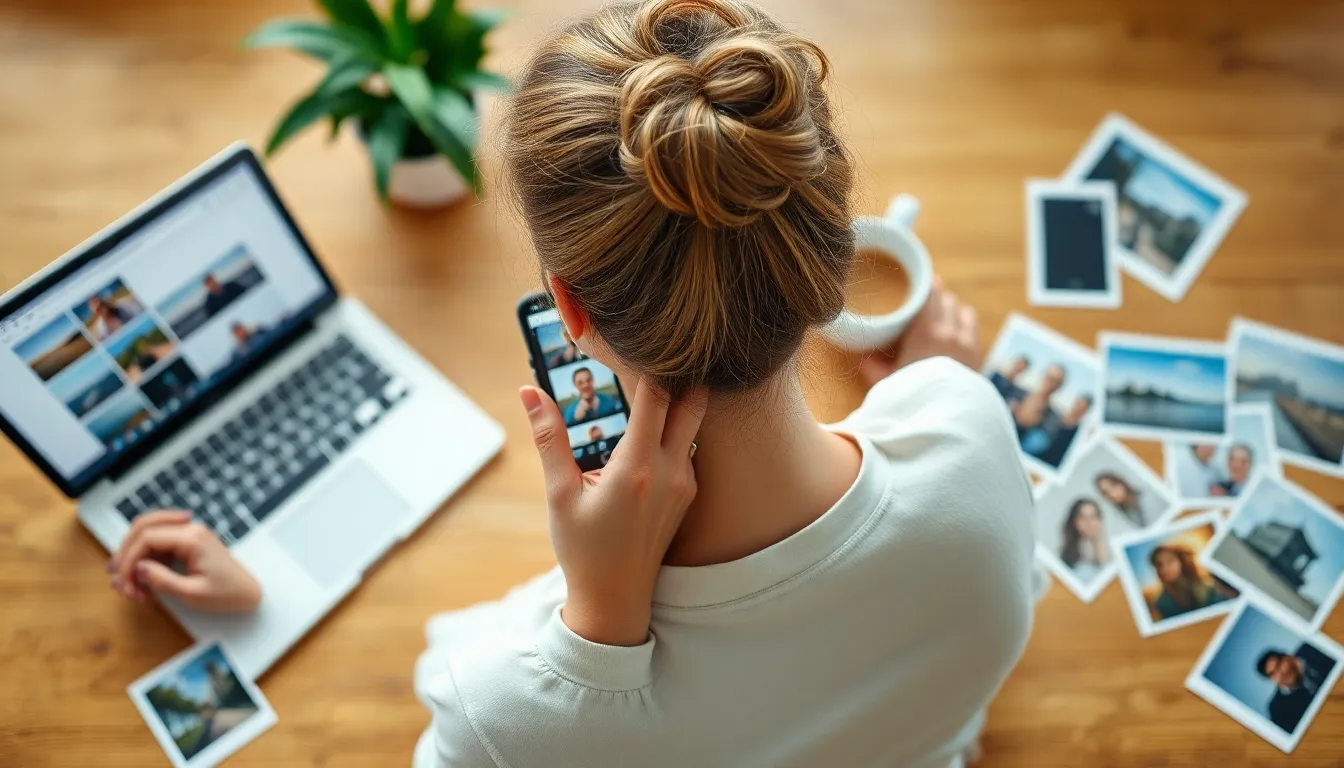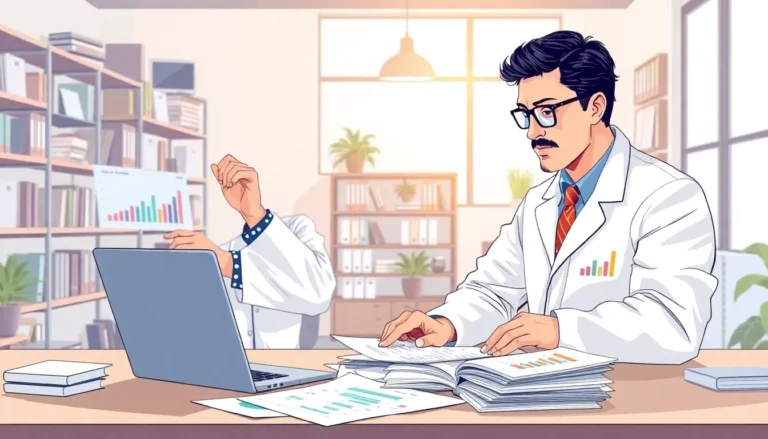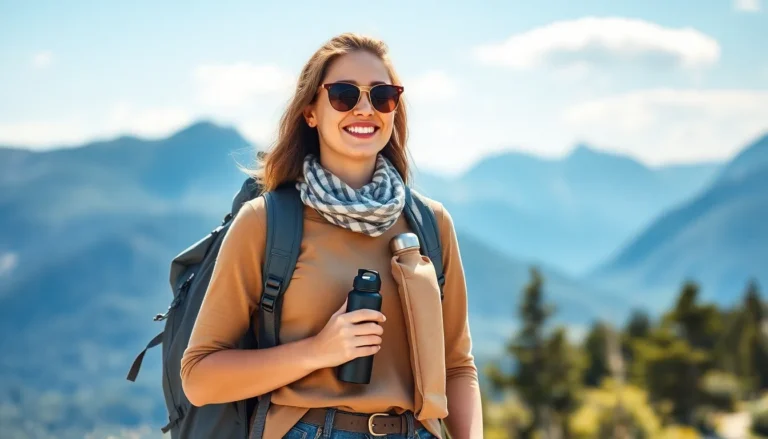In a world where sharing memories is just a tap away, the struggle between iPhone and Android users can feel like an epic showdown. Picture this: you’ve just captured the perfect sunset, and your friend with an Android phone is eagerly waiting to see it. But wait! How do you send that high-quality masterpiece without sacrificing its beauty?
Table of Contents
ToggleOverview of Sending Photos
Sending high-quality photos from an iPhone to an Android device involves various methods. Each method has its advantages and can affect image quality.
First, consider using cloud storage services. Services like Google Drive and Dropbox allow users to upload photos and share links. This approach maintains the original photo quality during the transfer process.
Second, explore direct messaging apps. Apps like WhatsApp and Telegram can send images directly. While these platforms often compress images, they usually offer options to send photos in their original quality.
Third, utilize email for photo sharing. Emails typically do not compress images, ensuring better quality. Users can attach several files at once, but attachment size limits apply.
Fourth, AirDrop can share photos between Apple devices effectively. However, this option requires additional steps for transferring to Android users. One workaround involves sending the photos to a nearby iPhone, then using email or messaging to reach the Android recipient.
Fifth, consider file-sharing services like WeTransfer. This platform offers easy sharing for large files without quality loss. Sending images through WeTransfer allows up to 2GB for free, accommodating multiple photos.
Choosing the right method relies on the desired balance between speed and image integrity. Each option can facilitate seamless sharing while maintaining high-quality standards. By understanding these methods, users can share stunning photos without sacrificing clarity.
Methods to Send High Quality Photos

Several methods exist for sharing high-quality photos between iPhone and Android devices, each offering unique advantages.
Using Email
Email serves as a reliable option for transferring high-resolution images. Many email services allow attachments up to 25 MB, ensuring original photo quality remains intact. Users can simply attach their images in a new email and send them directly to the recipient’s email address. This method avoids compression issues found in some messaging apps, preserving the full detail of the photos. Recipients can download the images easily, making it a straightforward choice for sharing.
Using Cloud Storage
Cloud storage solutions like Google Drive and Dropbox provide excellent ways to send high-quality photos. By uploading images to the cloud, users can share download links instead of sending photos directly. This approach guarantees that original image quality is maintained throughout the transfer. Users must ensure that both sender and recipient have access to the respective cloud service. File organization and sharing settings can help manage photo accessibility and security.
Using Messaging Apps
Messaging apps like WhatsApp and Telegram facilitate quick photo sharing but often encounter compression issues. Users can adjust settings in these apps to send images without losing quality, ensuring that the recipient receives a clear version of the photo. For instance, sending photos as documents rather than standard images in WhatsApp helps maintain fidelity. While convenient, understanding how each app handles image quality can significantly impact the sharing experience.
Best Practices for Quality Preservation
Maintaining photo quality during transfer between devices is essential. Users must apply specific strategies to enhance clarity and resolution.
Photo Resolution Considerations
Photo resolution directly impacts image quality. Selecting higher resolutions when taking pictures ensures that transferred images maintain sharpness. For instance, an original resolution of 12 MP typically retains better detail than a 2 MP version. Users should also check their camera settings on the iPhone to confirm that high-resolution options are active. Additionally, when sharing files, opting for original image formats instead of thumbnails maintains the best quality. Devices display vibrant colors and minute details more clearly with optimal resolutions, allowing for stunning visuals during sharing.
Compression Settings
Compression settings play a significant role in image quality retention. Many apps automatically compress images to save space or increase transfer speed. Adjusting these settings can prevent unwanted quality loss. In WhatsApp, users can select “Document” instead of “Photo” when sending images. This method sends the original file without compression. Some email services also allow users to attach images without altering quality, making them a reliable option. Awareness of each app’s compression behavior helps users maintain clarity while sharing high-quality photos.
Troubleshooting Common Issues
Issues can arise when sending high-quality photos from an iPhone to an Android device. One common problem is image compression, often encountered when using messaging apps like WhatsApp or Telegram. Users should verify settings to ensure images are sent without compression, which can significantly affect quality.
Connection problems might also occur during the transfer process. If a user experiences difficulty with cloud storage services, checking Wi-Fi or cellular data connections can help improve upload and download speeds. Users can try re-establishing their connection if they’re facing interruptions.
Photo resolution discrepancies can lead to further complications. It’s important users check their iPhone camera settings. Ensuring high-resolution options are activated helps maintain image quality during transfers to Android devices.
Inconsistent file formats often create issues for users. Sending images in formats like JPEG or PNG is advisable, as these are widely compatible with both iPhone and Android. Users can convert formats if necessary, making the files easier to handle.
Lastly, problems related to file size may arise. Email services typically handle attachments up to 25 MB, so users should confirm their images are within this limit. If files exceed this size, employing file-sharing services like WeTransfer proves effective in maintaining photo quality during transfers.
By troubleshooting these common problems, users can send stunning, high-quality photos seamlessly between iPhone and Android devices.
Sharing high-quality photos between iPhone and Android devices doesn’t have to be a challenge. By choosing the right method, users can ensure their images retain their clarity and detail. Whether opting for cloud storage services, email, or adjusting settings in messaging apps, each option has its unique benefits.
Staying mindful of resolution settings and file formats can further enhance the quality of shared images. Troubleshooting common issues can streamline the process and make sharing a breeze. Ultimately, with the right approach, anyone can enjoy seamless photo sharing without compromising on quality.


